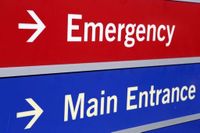In the heartlands of America, from the rolling hills of Missouri to the rural stretches of upstate New York, a crisis is unfolding that strikes at the very core of community life: the steady erosion of rural healthcare. While the issue has simmered for years, recent data and policy shifts have brought the situation to a boiling point, leaving many rural residents with dwindling options and growing anxieties about their health and well-being.
In Missouri, the numbers are stark. As of 2024, 95 out of the state’s 114 counties are officially designated as primary care shortage areas, according to the Missouri Hospital Association. The closure of 18 hospitals since 2014, with at least 12 shuttered in rural counties, has left vast swaths of the state without easy access to basic medical services. In some places, the nearest hospital is now a 60- to 90-minute drive away—a journey that can mean the difference between life and death in an emergency. The consequences are particularly dire for expectant mothers, who often travel long distances for labor and delivery, and for patients needing mental health or pediatric care.
But it’s not just Missouri feeling the pinch. An audit released on August 7, 2025, by New York State Comptroller Thomas DiNapoli paints an equally grim picture for 16 rural counties in the Empire State. The report found that these areas average just four primary care physicians per 10,000 people—less than half the statewide ratio of 8.1 and well below the national average of 8.4. In the most underserved regions, that number plummets to an astonishing 0.12 physicians per 10,000 residents. Several counties, including Chenango, Schuyler, and Yates, have no pediatricians at all, and Hamilton County is entirely without a dentist.
"The system is stretched to its breaking point," DiNapoli’s office reported, highlighting how population loss, an aging demographic, and limited public transportation compound the problem. Many residents must rely on personal vehicles to reach faraway clinics, adding both financial and logistical burdens to those already facing fragile health.
Shortages extend beyond doctors. Nurses, lab technicians, and mental health professionals are in equally short supply, and the pipeline for new providers is worryingly narrow. In Missouri, many rural hospitals rely on international medical graduates working on J-1 visas to keep their doors open. These physicians, who must serve at least three years in underserved communities, are often the backbone of rural healthcare. Yet, as reported by the Missouri Hospital Association, the immigration system leaves them in limbo, with more than 200,000 healthcare workers nationwide stuck in employment-based green card backlogs—some waiting a decade or more for permanent residency. The instability and uncertainty have, in the worst cases, forced dedicated doctors to leave the very communities that depend on them most.
“When visa delays force these providers to leave, it is not just a staffing problem. It is a loss that patients feel deeply,” a Missouri nurse wrote in a recent commentary. “We do not just lose physicians. We lose continuity, safety, and trust.”
Meanwhile, the situation in New York is exacerbated by federal policy changes. The new One Big Beautiful Bill (OBBB), signed into law as Public Law No. 119-21, earmarks $50 billion from 2026 to 2030 for a Rural Hospital Transformation Program. However, the American Hospital Association warns that the bill will reduce federal Medicaid spending on New York’s rural hospitals by $1.125 billion over the next decade. Additional provisions, including new annual and aggregate student loan limits for professional students, threaten to undermine loan forgiveness programs designed to attract new healthcare workers to rural areas.
Healthcare associations in New York are sounding the alarm. The Healthcare Association of New York State (HANYS) and the Greater New York Hospital Association (GNYHA) have both voiced strong opposition to OBBB, warning that the bill could cost New York almost $13.5 billion per year and devastate the state’s hospital infrastructure. In a June 2025 letter, five Republican members of New York’s congressional delegation—including Nicholas Langworthy and Elise Stefanik—requested a delay in implementing sections of the law that would otherwise force 500,000 legally residing immigrant New Yorkers onto state-only Medicaid. They cautioned that this could trigger “unsustainable spikes in uncompensated costs” for local health services and destabilize the state’s Essential Plan.
Financial instability is already threatening the survival of rural hospitals. According to an April 2025 report from the Center for American Progress, nearly a third of rural hospitals in New York are at immediate risk of closure. The Center for Healthcare Quality and Payment Reform found that over a third of the state’s rural hospitals face the same threat, with three having closed since 2015. In the 16 counties studied by DiNapoli’s office, 27% of the population—about 205,000 people—relied on Medicaid as of May 2025. Hospitals in these areas often operate on razor-thin margins, with Medicaid reimbursements covering less than half the rates paid by commercial insurers. A mere 10% cut in Medicaid funding would wipe out annual profits for 94 hospitals statewide, according to the Fiscal Policy Institute.
The staffing crisis is deepening. In Missouri, while the state has filled all 30 available J-1 visa waiver slots in recent years, only 7% of these physicians practiced in rural communities in 2018, and just 7% worked in primary care. Across the nation, the Association of American Medical Colleges projects a shortfall of up to 86,000 physicians by 2036. Rural areas are expected to bear the brunt of this deficit.
And it’s not just about numbers. The lack of representation among healthcare providers is a persistent issue. Fewer than 3% of U.S. physicians are Black men—a figure that has barely budged since the 1970s. Rural and low-income students, who are statistically more likely to return to underserved communities, face significant barriers to entering medical school, from daunting application processes to a lack of support networks.
Some solutions are on the table. DiNapoli’s audit recommends mobile clinics, school-based health centers, expanded telemedicine, and improved transportation to increase access. It also suggests offering loan forgiveness and stipends for new rural healthcare workers, as well as educational pathways for nursing staff to advance their degrees. In Missouri, advocates are calling for a reduction in green card backlogs, protection of providers from immigration enforcement disruptions, and real investments in pipeline programs for underrepresented students.
Yet, as hospitals close and staff shortages worsen, the stakes are rising. In some communities, the local hospital is not just a place for healing—it’s the largest employer and the economic anchor. Its loss reverberates through every aspect of rural life, from job security to the survival of small businesses. As one Missouri nurse put it, “This is not just about workforce numbers. It is about whether we choose a system that protects rural communities, or one that lets them quietly vanish.”
With policymakers, healthcare workers, and residents all searching for answers, the fate of rural healthcare remains uncertain. What is clear, though, is that the cost of inaction will be felt not only in statistics, but in the lives and futures of countless Americans who call these communities home.



